Why Should You Care About Ethically Sourced Gold and Precious Metals?
Mining and sourcing of gold, precious metals, diamonds, and gemstones come at a great cost to human lives, communities, and the environment, something that’s not usually considered when one steps out to buy a piece of jewelry which is why we use 100% recycled gold and always recommend recycled gold.
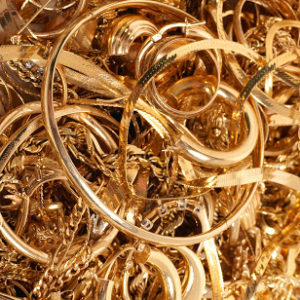
The Human Cost
The International Labor Organization (ILO) has reported that a good number of miners are either independent or belong to small companies. Lack of capital forces them to work in cramped underground tunnels without safety tools or protective gear, resulting in respiratory diseases. The surrounding communities are also exposed to toxic amounts of mercury, used in the process of extracting gold.
Considered a hazardous occupation in many countries, mining is regulated by law with a minimum age that varies in each country. And yet, child labor is rampant in mines all over Asia. In India, which accounts for 70% of the world’s diamond polishing, minors are hired (illegally) by diamond traders.
Gold and diamond trading is no doubt extremely lucrative, but the profits are rarely passed down to the people who risk life and limbs in the process. Instead, much of it finds its way into the wrong hands, funding weapons for rebel groups such as those in Sierra Leone, Congo, Angola, and Liberia. And in places like the gold reserves in Venezuela, armed syndicates control mining and impose hard labor on the local population under abusive conditions.
The Environmental Cost
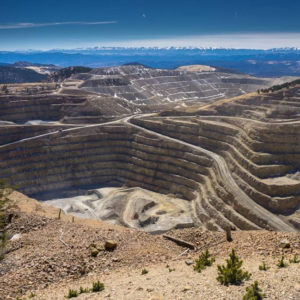
The environmental impact of mining cannot be overstated. Digging vast mounds of the earth cause displacement of the land’s natural structure, disturbance of indigenous ecosystems, and large-scale destruction of watersheds.
The mining process also uses a lot of energy. It involves burning of coal and other fossil fuels as well as deploying machines and vehicles for extraction and transportation, all of which generate greenhouse gases and staggering amounts of air pollution. Electrical and water consumption by the mining industry is equally staggering.
Complicated Supply Chains
A supply chain is the production line where goods travel from source to distribution. It usually starts with the supplier of raw materials, which then go into manufacturing, transferred to packaging, and finally, distributed to the end-users.
In the mining process, the supply chain begins in the quarry and ends with the consumers, both wholesale and retail. Technology companies are the biggest wholesale buyers of metal products, and their customers are the largest base of retail consumers.
Each of the four phases of a large-scale mining supply chain takes years to accomplish.
- Exploration for new reserves which lasts 7-10 years
- The Development phase which spreads out over 5-10 years
- Operations that are carried out over 2-20 years
- Closure, which again takes 2-10 years.
These statistics are astounding, especially if you consider them in context to the ring on your finger or the small studs in your ears. Another reason you need to consider sustainable gold.
What is the Difference Between New Gold and Recycled Gold?
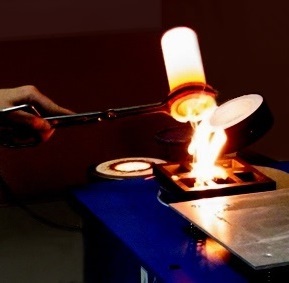
The answer is simple: Nothing! That is, strictly speaking, in terms of value and appearance. Gold is indestructible. It maintains its quality even when recycled.
However, a world of difference exists in their sourcing. New gold involves harvesting the metal directly from rocks lodged far beneath the Earth’s soil. Recycled gold, on the other hand, entails recovering it from existing products or old jewelry and a more apt term for it would be sustainable gold.
Recycled gold is environment-friendly, not only because it avoids the overexploitation of our planet’s reserves but also because it helps decrease the demand on an already abused environment and significantly cuts down on the amount of waste. Recycled gold does not also necessitate the use of thousands of cubic meters of water or kilowatts of electricity.
While most of the recycled gold currently in use comes from jewelry, it can also be sourced from cell phones, computers, CDs, DVDs, flatware, and electronic chips in cars.
Can Precious Metals be Recycled for Use in Jewelry?
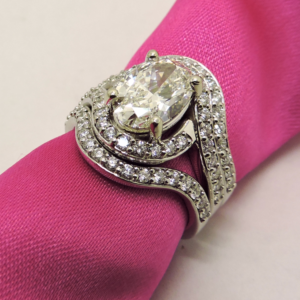
Aside from gold; silver and platinum are also popular precious metals used in creating fine jewelry. Classified as non-ferrous metals, they retain their original chemical and physical properties throughout the recycling process, no matter how many times they are recycled.
For this very reason, recovering precious metals is an environmentally friendly option for creating jewelry. It leaves the planet’s resources untouched and requires much less energy too. The recovery process may be challenging, but it is not impossible.
The first step is collecting jewelry and extracting the metals from electronic products that are sold to scrap yards where they are sorted manually or with the use of magnets and sensors. Next, the metals are shredded and melted in a furnace. Each type of metal goes into a furnace specifically built for it.
After melting, these metals undergo a purification process to weed out foreign substances and ensure high quality. And finally, they are cooled until solid, and then formed into bars or other shapes.
Through this meticulous process, precious metals are restored to their original form, fit for use even in fine and custom jewelry. The refined metals are most often re-alloyed into 950 Platinum, 950 Palladium, 18K, 14K, 10K, or 924 Sterling casting grains so they can be cast again as a completely new design.
The Bottom Line
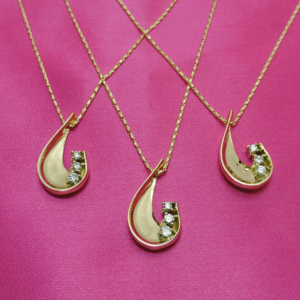
Jewelry is an integral part of human existence. From the beads of ancient times to the first use of gold and gems in 1600 B.C. Greece, these adornments have defined the identity and culture of the different races at different times. However, excessive and irresponsible consumption of precious metals and gemstones has led to the exploitation of our planet.
At Revolution Jewelry Works, the environment is our first priority and we are committed to being an active contributor to the reversal of this trend. We invite you to join us in using ethically sourced and 100% recycled materials for your jewelry while continuing to enjoy the beauty of fine and customized pieces. Together we can make the right kind of difference.
Revolution Jewelry Works is a custom jewelry design studio located in Colorado Springs, Colorado. Our specialty lies in creating fine custom jewelry and jewelry repair, and we offer on-site gemstone faceting and lapidary services. Our skilled Master and Bench Jewelers create unique designs in Gold, Platinum, Palladium, Silver, and Stainless Steel using state-of-the-art technology in CAD/CAM software. These custom jewelry designs can be digitally rendered as a virtual photograph before casting to ensure the finished piece meets the vision and expectations of our customers.
Due diligence is exercised in finding and using ethically sourced gold, silver, platinum, diamonds, and gemstones to create custom rings, pendants, earrings, necklaces, bracelets, pins, tie tacks, cufflinks, and other unique jewelry items that can be considered heirloom pieces. Revolution Jewelry Works partners only with jewelry manufacturers that use 100% recycled gold.